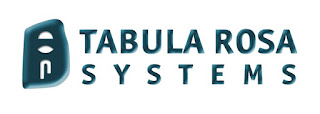|
Buffer Overflow from whatis.com
|
|
Buffer
overflow is an attack vector that can be exploited by sending more
data to a fixed length block of memory (buffer) than the fixed length block
of memory is allocated to hold. When there is excess data, it gets written to
an adjacent buffer and will overwrite whatever data is being held there.
Buffers are vulnerable to attack when applications fail to validate input
from the client or other processes and flag or discard data when too much is
sent to a memory buffer.
Buffer
overflow always ranks high in the Common Weakness Enumeration/SANS Top 25
Most Dangerous Software Errors and is specified as CWE-120 under the Common
Weakness Enumeration dictionary of weakness types. Despite being well
understood, buffer overflows continue to plague software from vendors both
large and small. Vendors issue patches and updates for their software to fix
buffer overflow vulnerabilities that have been discovered, but there is still
a period of risk between the vulnerability being discovered and the patch
being created and deployed.
Techniques
to exploit buffer overflow vulnerabilities vary based on the operating system
and programming language, but the goal is always to manipulate a computer's
memory to subvert or control program execution. Buffer overflows are
categorized according to the location of the buffer in the process memory,
the two main types being stack-based overflow and heap-based overflow.
|
Good Netiquette
And A Green Internet To All! =====================================================================
Tabula Rosa Systems - Tabula Rosa
Systems (TRS) is dedicated to providing Best of Breed Technology and
Best of Class Professional Services to our Clients. We have a portfolio of products which we
have selected for their capabilities, viability and value. TRS provides
product, design, implementation and support services on all products that we
represent. Additionally, TRS provides expertise in Network Analysis, eBusiness
Application Profiling, ePolicy and eBusiness Troubleshooting.
We can be contacted at:
sales@tabularosa.net
or 609 818 1802.
===============================================================
In addition to
this blog, Netiquette IQ has a
website with great assets which are being added to on a regular basis. I have
authored the premiere book on Netiquette, “Netiquette IQ - A Comprehensive
Guide to Improve, Enhance and Add Power to Your Email". My new book,
“You’re Hired! Super Charge Your Email Skills in 60 Minutes. . . And Get That
Job!” has just been published and will be followed by a trilogy of books on
Netiquette for young people. You can view my profile, reviews of the book and
content excerpts at:
Anyone who
would like to review the book and have it posted on my blog or website, please
contact me paul@netiquetteiq.com.





No comments:
Post a Comment